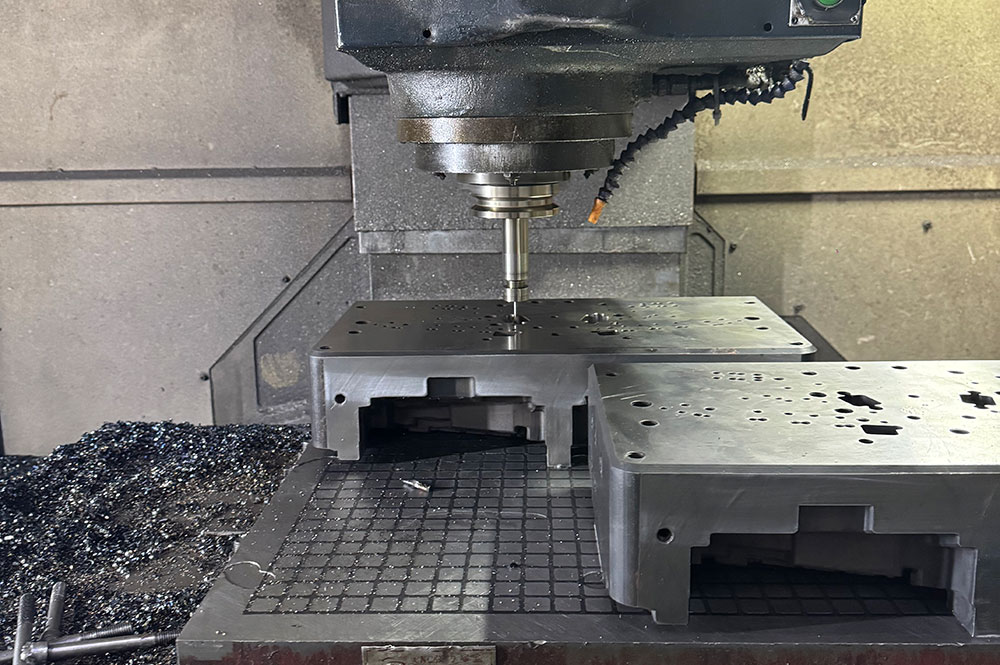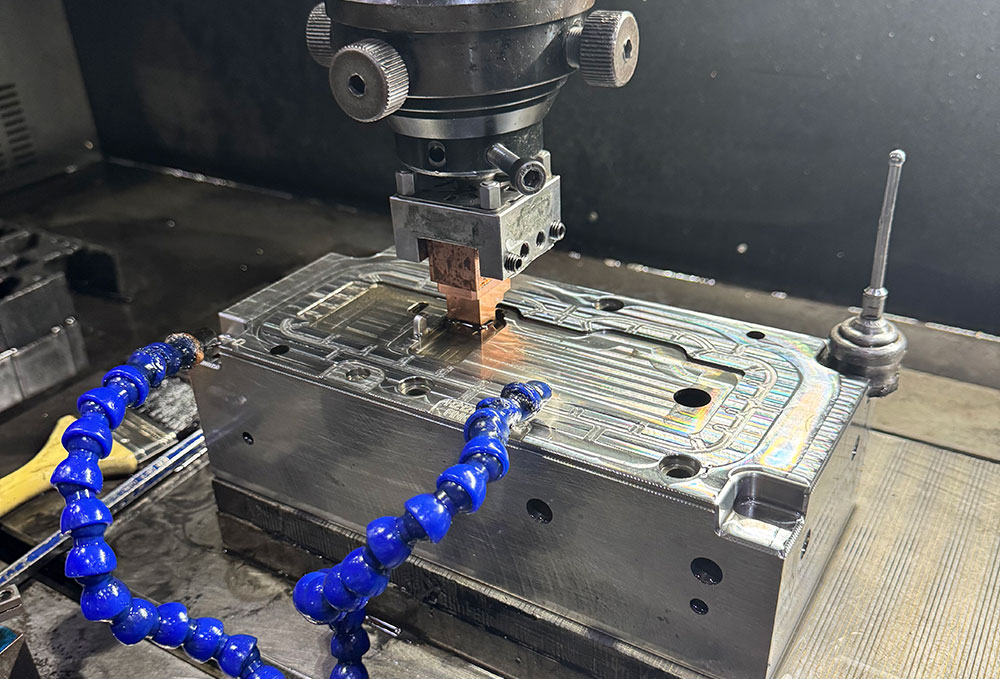What is CNC Machining? A Comprehensive Guide to High Precision CNC Machining
Introduction
In the modern manufacturing landscape, industries such as automotive, medical, and defense demand extremely tight tolerances—often as precise as ±0.001 inches—to ensure optimal performance. Traditional machining methods simply cannot deliver this level of precision. That’s where high precision CNC machining comes into play. This guide delves into the fundamentals of CNC machining, exploring the process, equipment, materials, benefits, and diverse applications. Our aim is to provide you with a thorough understanding of how high precision CNC machining can revolutionize your production, ensuring consistent quality and efficiency.

What is CNC Machining?
Definition and Overview
CNC (Computer Numerical Control) machining is an automated manufacturing process that uses computer-controlled tools to remove material from a workpiece based on a pre-designed 3D model. Unlike conventional machining, the automated tool paths in high precision CNC machining ensure that each part is produced with minimal deviation, achieving tolerances as tight as ±0.1 to 0.2 mm.
-
Automation and Accuracy:
•The process is guided by digital instructions, eliminating much of the human error inherent in manual machining.
•Consistency across multiple production runs is a hallmark of high precision CNC machining. -
Critical Role in Industry:
•CNC machining is crucial for producing parts that require exacting dimensions and flawless finishes, making it indispensable in high-tech sectors.
Step-by-Step Process of High Precision CNC Machining
1. Design and CAD Modeling
The journey begins with a detailed design:
- 3D Modeling:
•Engineers use software like AutoCAD or SolidWorks to develop precise digital models.
•Designs include exact dimensions, tolerances, and critical features. - Design for Manufacturability:
•Ensure the model is optimized for CNC machining by considering tool paths and material removal strategies. - Visualization:
•Digital simulations help visualize the final part and preempt any potential issues.
2. CAM Programming and CNC Setup
Once the design is complete:
- Generating Tool Paths:
•CAM software converts the 3D model into G-code instructions that dictate tool movement.
•Simulation of the machining process minimizes errors. - Machine Setup:
•CNC machines are prepared with the correct cutting tools, and the workpiece is securely clamped. - Proper alignment and calibration are crucial to achieving the desired precision.
3. Machining Process
The actual material removal takes place:
- Tool Operation:
•The CNC machine executes the programmed instructions, with cutting tools precisely removing material.
•Fine adjustments in spindle speed, feed rate, and cutting depth help achieve high precision. - Real-Time Monitoring:
•Automated systems track the machining process, ensuring each part meets strict tolerances.
4. Post-Processing and Finishing
Final steps ensure the part’s quality:
- Surface Treatment:
•Post-processing such as grinding, deburring, and polishing removes imperfections.
•These steps not only improve surface finish but also enhance the part’s functional performance. - Quality Inspection:
•Techniques like 3D scanning and dimensional analysis verify that the finished part meets all specifications.
Types of CNC Machines for High Precision Machining
CNC Milling Machines
- Features:
•Utilize rotating cutting tools that move along multiple axes.
•Capable of achieving tolerances as fine as ±0.0025 mm, ideal for complex shapes. - Applications:
•Used for creating flat, contoured, or curved surfaces in various industries.
CNC Lathes and Turning Centers
- Functionality:
•Rotate the workpiece while a stationary tool removes material, perfect for cylindrical parts. - Precision:
•Achieves excellent symmetry and consistent dimensions, essential for shafts and rods.
CNC Drilling Machines
- Mechanism:
•Use rotating drill bits to produce precise holes. - Techniques:
•Employ spot drilling and peck drilling for optimal accuracy in hard materials.
Electrical Discharge Machines (EDM)
- Process:
•Remove material via controlled electrical discharges (sparks) to form intricate shapes. - Benefits:
•Ideal for hard metals and alloys, with minimal mechanical stress on the workpiece.

CNC Plasma Cutting Machines
- Operation:
•Use ionized gas beams to cut through conductive materials with high precision. - Precision:
•Can achieve tolerances as low as ±0.001 inches, making it valuable for detailed cutting tasks.
Relevant Standards:
- ISO 2768(General Tolerance Standard)
- DIN 7168(Machining Dimensional Tolerances)
- GB/T 1804(Chinese Dimensional Tolerance Standard)
CNC Grinding Machines
- Purpose:
•Refine surfaces and improve dimensional accuracy using rotating abrasive wheels. - Outcome:
•Produces smooth, polished finishes essential for high-precision parts.
Materials Suitable for High Precision CNC Machining
Metals
- Examples:
• Aluminum, steel, titanium, and brass are frequently used due to their strength and durability. - Benefits:
• Ideal for high-performance applications where precision is paramount.
Plastics
- Examples:
• ABS, PEEK, and nylon offer lightweight properties and resistance to corrosion. - Applications:
• Widely used in consumer products, medical devices, and electronic housings.
Composites and Ceramics
- Advantages:
• Provide exceptional strength, insulation, and heat resistance. - Usage:
• Utilized in specialized components requiring unique properties.
Benefits of High Precision CNC Machining
Enhanced Accuracy and Consistency
- Unmatched Tolerances:
•Achieves precision as tight as ±0.001 inches, ensuring every part is nearly identical. - Repeatability:
• Automated processes guarantee consistency across large production runs.
Material Efficiency and Waste Reduction
- Optimized Material Usage:
• Precise tool paths minimize material waste and reduce costs. - Environmental Impact:
•Reduced waste and energy-efficient processes contribute to a lower environmental footprint.
Versatility and Complex Geometry Production
- Intricate Designs:
• Capable of producing complex geometries that are difficult or impossible with traditional machining. - Multi-Axis Capability:
•Machines can operate on multiple axes, allowing for detailed, three-dimensional shapes.
Increased Production Speed and Efficiency
- Automation Benefits:
•CNC machining minimizes manual intervention, reducing production time and labor costs. - Optimized Processes:
•Fine-tuned parameters and real-time monitoring ensure efficient production cycles.
Applications of High Precision CNC Machining
Automotive Industry
- Critical Components:
• Engine parts, transmission components, and structural elements that require strict tolerances. - Performance Enhancement:
• Ensures safety and reliability in high-performance vehicles.
Medical Industry
- Implants and Devices:
• Surgical instruments, orthopedic implants, and dental devices demand extreme precision. - Patient Safety:
• Consistent, high-quality parts are essential for effective medical treatments.
Aerospace and Defense
- Complex Components:
• Turbine blades, structural components, and aerospace equipment require unparalleled accuracy. - Operational Reliability:
• High precision ensures that critical parts perform under extreme conditions.
Electronics
- Small, Intricate Parts:
• Enclosures, connectors, and heat sinks manufactured with precision to ensure device reliability. - Technological Innovation:
• Enables miniaturization and high-performance electronics.
Conclusion
High precision CNC machining is indispensable for industries that require exacting tolerances and consistent quality. By leveraging advanced CAD/CAM tools, state-of-the-art CNC equipment, and skilled expertise, manufacturers can achieve outstanding results that drive innovation and efficiency. Embracing this technology not only enhances product performance but also minimizes waste and lowers production costs.
Contact Us Today!
Huazhi is a precision CNC machining company based in China with extensive experience in automotive, aerospace, electronics, medical, industrial and process plants, and many other industries around the world.Ready to harness the power of high precision CNC machining for your next project? Contact us today to discuss your requirements and discover how our advanced machining solutions can give you a competitive edge.
FAQs About High Precision CNC Machining
Q1: What is the tolerance limit achievable with high precision CNC machining?
A: High precision CNC machining can achieve tolerances as tight as ±0.001 inches, ensuring that each component is produced with exceptional accuracy and consistency.
Q2: Which industries benefit most from high precision CNC machining?
A: Industries such as automotive, medical, aerospace, and electronics rely on high precision CNC machining to produce critical components that require strict dimensional control and high-quality finishes.
Q3: What materials are best suited for high precision CNC machining?
A: Metals like aluminum, steel, and titanium, as well as plastics like ABS and PEEK, are commonly used in high precision CNC machining due to their durability, strength, and suitability for complex geometries.
Q4: How can manufacturers ensure the best precision in CNC machining?
A: Selecting experienced machinists, utilizing advanced CAD/CAM tools, optimizing machining parameters, and implementing stringent quality control measures are essential for achieving superior precision.
Q5: Is high precision CNC machining cost-effective for mass production?
A: Yes, despite the initial investment, the efficiency, reduced waste, and consistent quality of high precision CNC machining make it highly cost-effective for large-scale production.
Q6: What are the key advantages of using CNC machining over traditional methods?
A: CNC machining offers superior accuracy, repeatability, faster production speeds, reduced human error, and the ability to produce complex designs with tight tolerances, making it ideal for high-precision applications.
